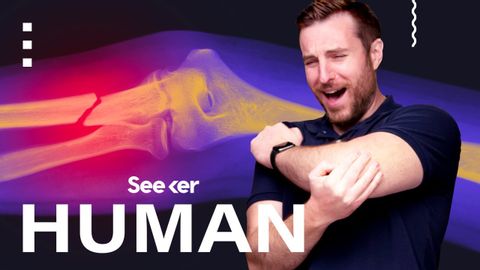あなたの体はどのように痛みを処理していますか? (How Does Your Body Process Pain?)
Summer が 2021 年 01 月 28 日 に投稿  この条件に一致する単語はありません
この条件に一致する単語はありませんUS /səbˈskraɪb/
・
UK /səb'skraɪb/
- v.t./i.(定期的なサービスに)申し込む : 予約をする : 予約金を払う
US /spɪˈsɪfɪk/
・
UK /spəˈsɪfɪk/
US /ˈɛpɪˌsod/
・
UK /'epɪsəʊd/
US /ˈkɑɡnɪtɪv/
・
UK /ˈkɒgnətɪv/
- adj.認知の;認知能力の;認知発達の;認知療法の
エネルギーを使用
すべての単語を解除
発音・解説・フィルター機能を解除
